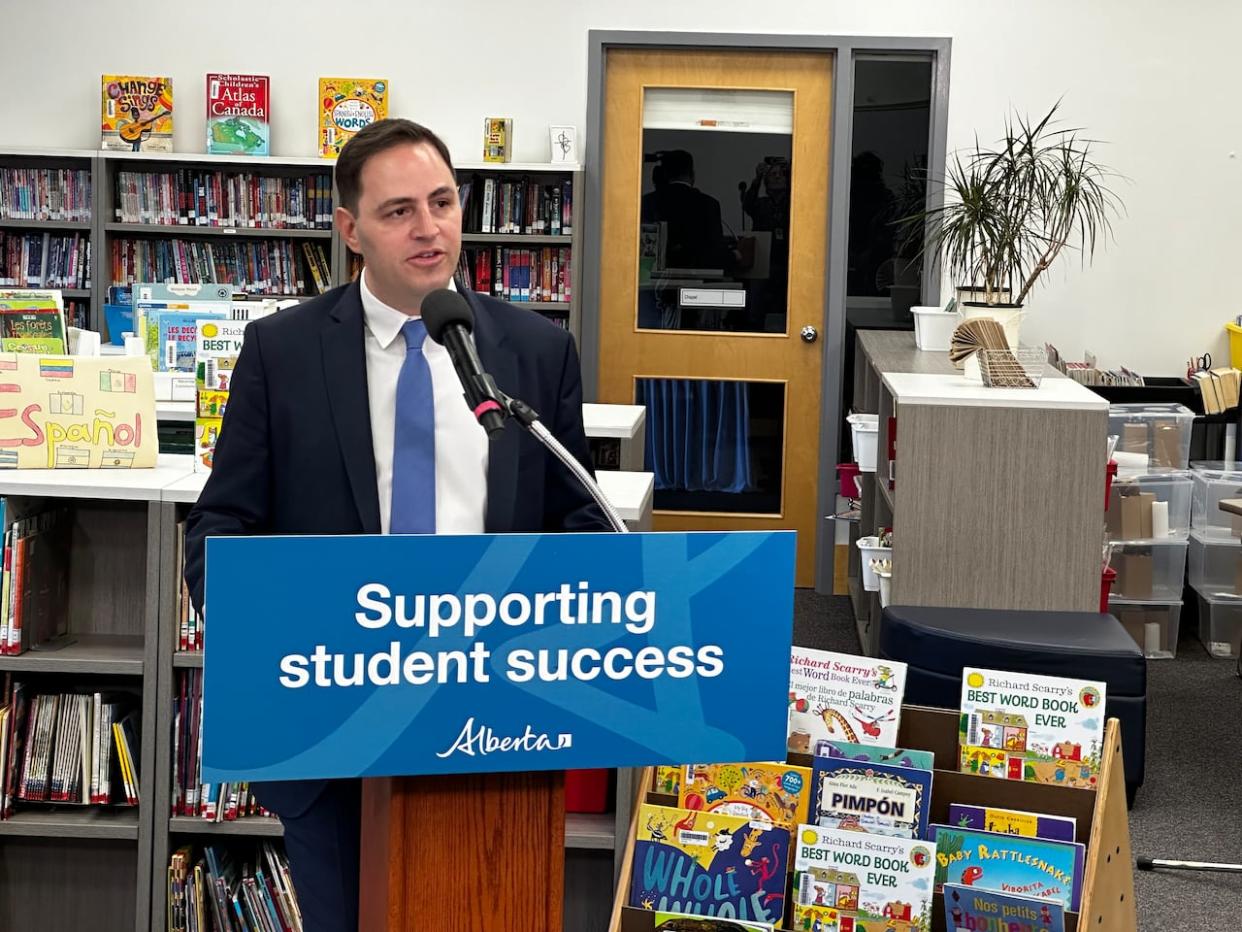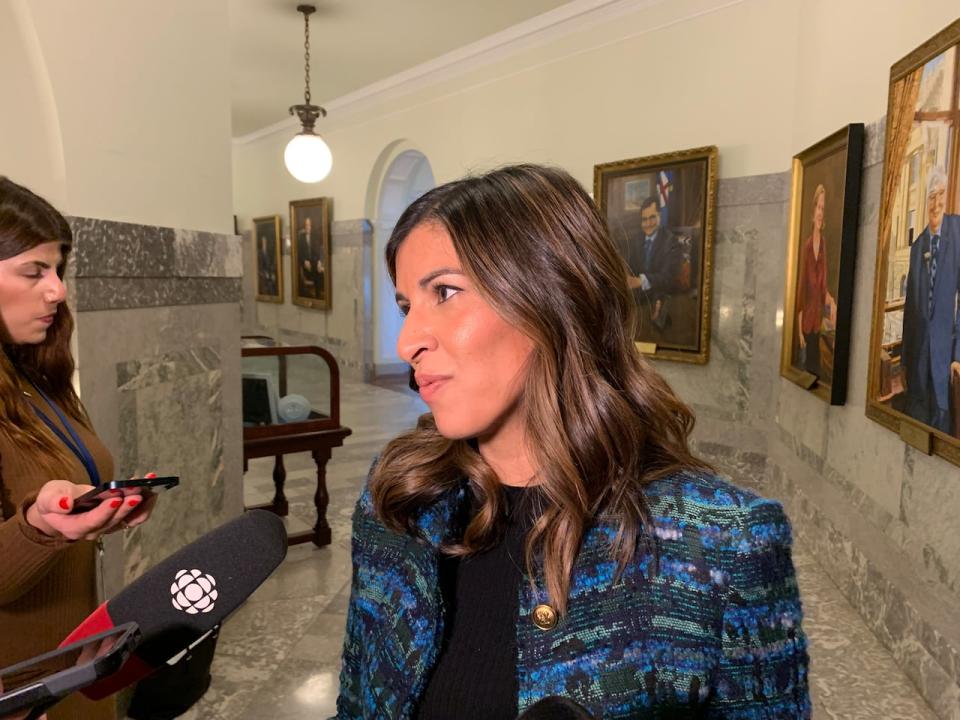Alberta government injects $30M into crammed classrooms

A one-time $30-million cash injection for Alberta classrooms teeming with extra students is welcome relief, at least two school divisions say.
However, public education advocates and critics of the provincial government's K-12 education funding approach say what students — and school boards — need is an overhauled funding formula.
"This funding model is a failure," NDP education critic Rakhi Pancholi said at the legislature on Tuesday. "And the government needs to go back, and needs to change that."
Growing school boards especially have raised concerns about the formula implemented in 2020 by the United Conservative Party government.
The formula bases per-student funding on a calculation, called the weighted moving average (WMA) that includes the previous year's enrolment count, the current year's count and the predicted enrolment for the next school year.
Although the formula has protected some rural school boards with declining enrolment from punitive financial hits, growing school divisions never receive full funding for new students who walk through their doors each September.
On Tuesday, Education Minister Demetrios Nicolaides would not commit to the government reviewing the funding formula.
"Always happy to have a conversation with school divisions as I have over the past few months," Nicolaides told reporters.
"I've heard a variety of different things on the WMA. We'll take that information and things that we've heard to help us inform next steps."
The Alberta School Boards' Association (ASBA) has also said the formula does not work for growing divisions. In an election campaign video posted in May, Premier Danielle Smith told ASBA that as Alberta's population grows, the school funding model will have to adjust to accommodate that.
A short-term adjustment
Pressure on Edmonton and Calgary schools is unrelenting. Enrolment in both Edmonton's public and Catholic schools grew by at least five per cent during the last five years.
Last year, the province introduced a supplemental enrolment grant to help rapidly growing divisions. This funding was limited to divisions whose population grew by more than two per cent.
On Tuesday, Nicolaides visited Holy Child Catholic school in central Edmonton to say $30 million was en route next month to any school authority with a jump in enrolment.
School authorities will receive $1,500 each for the first extra 100 students, and $2,000 for each additional pupil. It's unclear what restrictions they face in how to spend the money.
"Alberta's government is committed to keeping our education system world class, and this investment will help us achieve that goal," Nicolaides said.
Edmonton Catholic school board chair Sandra Palazzo, who was also at the announcement, says her board will receive another $5.1 million this year, which was $1.9 million more than the supplemental enrolment grant she expected.
Nearly half of the division's newest students immigrated from another country, and hundreds of them arrived not speaking English, she said. The extra money will help meet their needs, she said.

Rakhi Pancholi is the education critic and an NDP MLA for Edmonton-Whitemud. (Janet French/CBC)
In Leduc-based Black Gold School Division, south of Edmonton, growing bedroom communities have pushed up school enrolment by about 11 per cent in the last five years.
"All extra funding is good funding," superintendent Bill Romachuk said in an interview.
However, receiving that money mid-school year presents challenges, Romanchuk said.
It's harder to hire teachers and school support staff mid-year, he says. Educational assistants with a college diploma are already in short supply, he said. Splitting classes in two when school schedules are already established for the year isn't easy, he said.
When extra funding comes in the form of grants, rather than through the funding formula, it adds extra paperwork for divisions, Romanchuk said.
He understands why the government adopted its funding formula, but questions if it's appropriate for a province in a population boom.
"Yes, it is predictable, absolutely," Romanchuk said. "That doesn't make it right"
Nicolaides' announcement was greeted by statements from the Alberta Teachers' Association and advocacy group Support Our Students (SOS) Alberta, saying the funding was too little, too late, to improve learning conditions in schools that are grappling with large class sizes and more students with complex needs.
SOS called on the government to restore and expand mandatory tracking of class size and complexity, and to revamp the funding formula.
"We need a targeted, comprehensive action plan that includes meaningful systemic supports to re-commit to providing high quality public education accessible for every student," executive director Medeana Moussa said in a statement.


